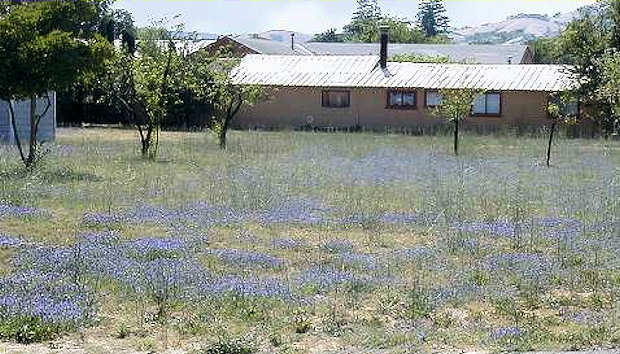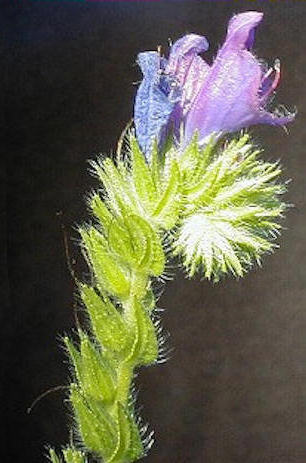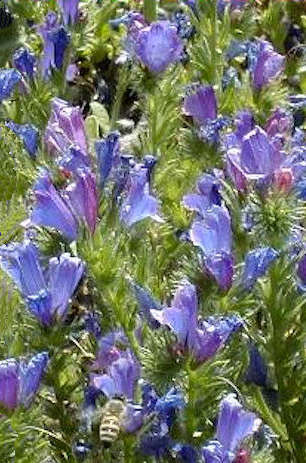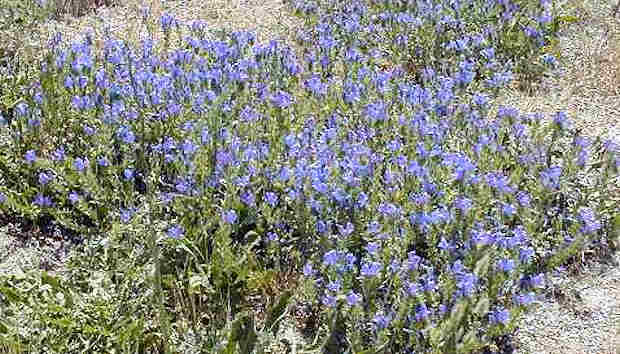Bugloss - A "New" North Bay Wildflower
Echium plantagineum (Boraginaceae)

June 24, 2006. This attractive plant forms carpets of lavender-blue flowers in open lots along Leveroni Road in Sonoma, California. One resident suggested they had been there for 40 years (although similar appearing Lupine grows there too), and that "rabbits really love them" (so do honeybees).
New inch-long flowers have an electric blue wash in the throat, but within a day or two they fade to a reddish purple. Each day new flowers open, so the developing stalk uncoils, elongates, and keeps its color over several weeks.
The helicoid flower stalks look like they might belong to a Phacelia (Hydrophylaceae), but Phycelias don't have bilaterally symmetrical flowers. Another option might be a fiddleneck (like Amsinkia - in the family Boraginaceae). Lower on the stalk, developing seeds form four "nutlets", showing this is the right path.
Turns out to be Purple Bugloss (Echium plantagineum - Boraginaceae), listed but not figured in the Jepsen Manual of Higher Plants of California, and not even listed in Best et al's Sonoma County Flora, or Beidlemen and Kozloff's Plants of the San Francisco Bay Region. The new, revised Marin Flora noted that it had been found once in a weedy roadside patch about 25 miles to the west, near Point Reyes Station.
Purple Bugloss comes from Eurasia, imported years ago as an ornimental, and escaped into the wild. One Richmond nursery describes it as a colorful, abundantly reseeding ground cover - an ideal plant for folks missing all traces of a green thumb (Zero maintenance, Zero water all summer, etc.).
Bugloss can't be sold in Oregon, because it's considered too invasive. In California, related fiddlenecks can make pastures or hayfields unusable. Australians and New Zealanders place Bugloss in the same rank with the imported rabbits that escaped and devoured large parts of their country's native vegetation.



Update (July 7, 2006). During the week, vegetation on the property was mowed to the ground. Only a few plants remain around the edges.
Update (July 25, 2006). Most of the plants mowed to the ground seem to be regrowing. A blue haze of short, new Bugloss flowers again carpets the lot.
Update (May 10, 2007). The lots look every bit like they did before last summer's mowing. The removal was only temporary, with zero lasting effect.
Update (April 24, 2009). The lots were last mowed a couple of months ago. Today they have a dense carpet of short Bugloss plants, many in bloom.
Update (May 13, 2010). More recent mowing, but the plants are in bloom and thriving.
Update (July 11, 2011). There's a carpet of blue-flowered plants only an inch or so deep in the lot at the Leveroni Road / Palmer Avenue intersection - after a mowing a few weeks ago. Many other plants bloom in lots and roadways all along Palmer Avenue.